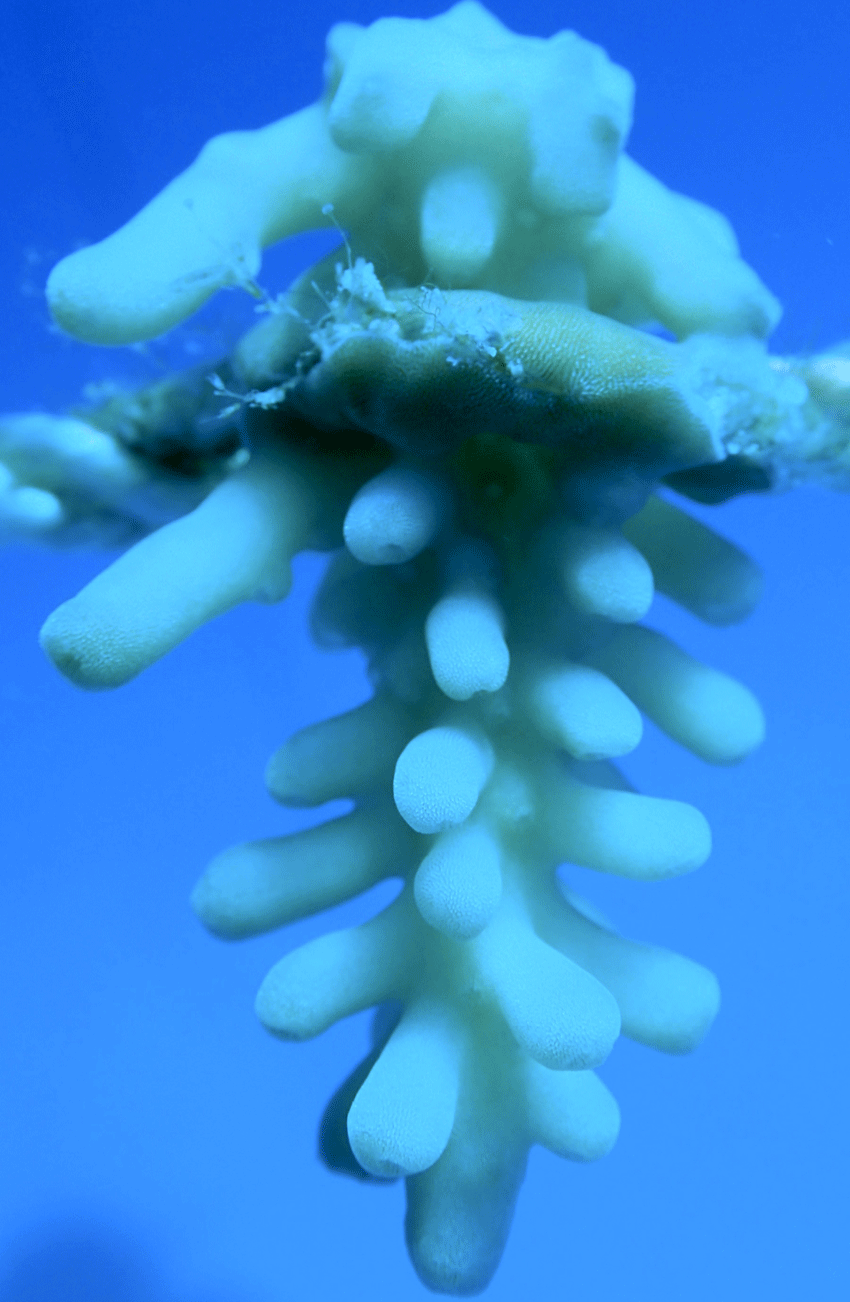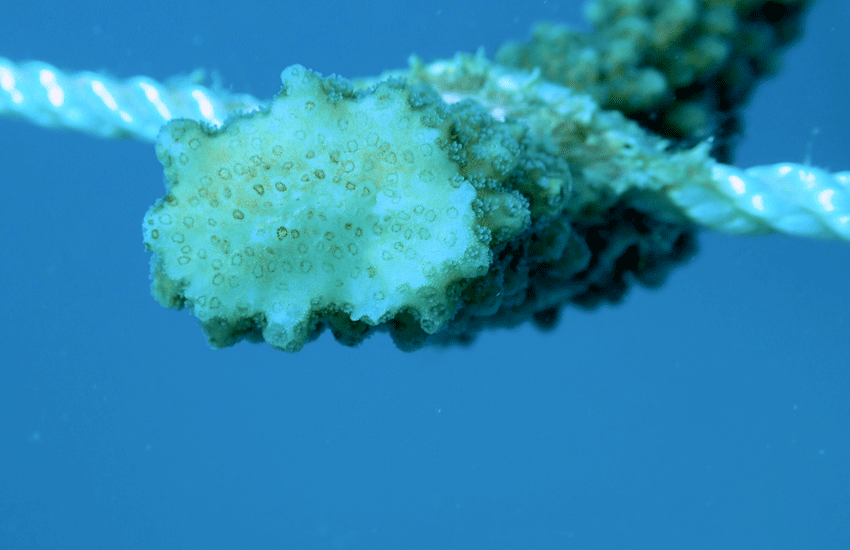Fragmenting a coral creates a wound of coral tissue and produces a breach, leaving the corals vulnerable to foreign invasions form other marine organism such as algae and sponges. Similar to our own response to a cut received – our bodies are quick to scab over the wound in order block from foreign body infections and commence the healing process, creating new tissue underneath.
 sheeting acropora (genus of small polyp stony coral)
sheeting acropora (genus of small polyp stony coral)
This manner of healing is heavily dependent on how well these corals are fostered within the nursery. There must be a considerable effort put forth toward cleaning all the bio fouling on and off the coral to allowing the coral to focus on repair and growth, instead of fighting back all the marine life prepared for self attachment and compete for space and light among our corals.
Once the coral has a healthy tissue over the scar and has sheeted over the rope, cleaning still continues! With that said, this progression once completed, gives the Reef Rescuers a sigh of relief because now our effort on cleaning can be fine tuned. The cleaning work can now be focused between the corals themselves, discontinuing cleaning near the coral thus decreasing time spent on each rope.
 scarring
scarring
Corals (especially branching forms) trigger this response regularly with hump-head parrotfish predation or any sort of coral herbivory on a reef.
by Austin Laing-Herbert, Projects Operations Co-ordinator Reef Rescuers Project

